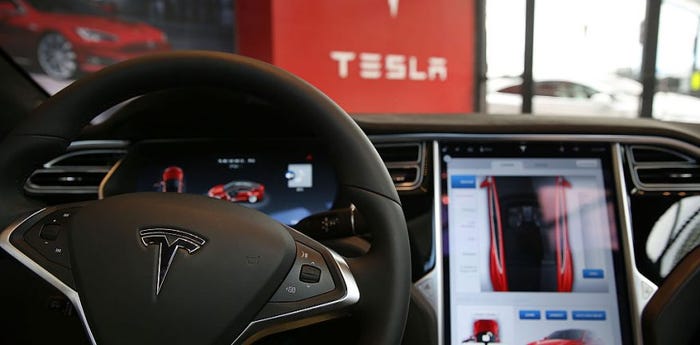Fleet Telematics: A Technology Trip Continues
Fleet telematics is growing. Telematics market analyst Clem Driscoll weighs in on how the technology continues to evolve.
July 22, 2019

Large fleet operators have deployed telematics technology long before the U.S. government’s mandate that Electronic Logging Devices be installed in long-haul trucks. In the last few years, however, the ELD mandate “had the most significant impact of any single thing” in driving greater interest from a broader array of companies in and use of telematics technology , according to Clem Driscoll, founder and principal of C.J. Driscoll & Associates.
In the next few years, growth in use of telematics for fleet management and other applications could continue. Earlier this year, Driscoll and Associates observed in the “2019–20 U.S. Mobile Resource Management Systems Market Study” that about 13 million devices enabled with GPS and wireless connectivity are deployed today to manage fleet vehicles, trailers, equipment and field service workers across a variety of industry verticals. By 2022, that figure will grow to more than 20 million units, with yearly hardware and service revenues reaching more than $6.8 billion.
At the same time, technology innovation will continue, with video telematics becoming more common, and truck trailer manufacturers creating more “smart trailers” that will generate and leverage fleet telematics in new ways. Driscoll recently spoke with IoT World Today about the telematics evolution. Here are highlights from that interview, which have been edited for clarity and length:
IoT World Today: Your market study from earlier this year focuses on telematics and mobile resource management. Are these terms synonymous, or is one a subset of the other?
Clem Driscoll: We use the term “mobile resource management” quite a bit, and it covers all the sectors covered by telematics — GPS fleet management for local fleets, driver behavior management solutions, trailer monitoring and other asset monitoring solutions. But, it also addresses field resource management solutions. The purpose of those systems is to communicate and help manage a field worker, as opposed to a fleet vehicle, so it’s really not a telematics system. Some of those are handset-based, so there may be nothing in the vehicle connecting. That’s why we use the term “mobile resource management.” It’s a little bit broader, a term used to encompass systems that aren’t tied to the vehicle. But, to get to the heart of your question, commercial telematics is the subset of mobile resource management.
IoTWT: To what degree did the ELD mandate spur greater interest in and adoption of telematics for fleet management and other uses?
CD: ELD is a telematics solution. The government’s estimate when they issued the ELD mandate [in 2012] is that it would apply to 3.1 million trucks. Of those, close to half were previously using a GPS fleet management solution of some kind. Now, pretty much all 3 million trucks, for which drivers’ hours of service monitoring were mandated, all have either ELDs — or until the end of this year can use AOBRDs [Automatic On-Board Recording Devices]. So, the ELD mandate greatly expanded the use of telematics in the trucking sector, but also buses and other types of motor coaches. In my opinion, and I think in anyone’s, it’s had the most significant impact of any single thing on the growth of and use of telematics in the last several years. Now, the opportunity for ELD vendors is to get their customers to upgrade to solutions that include more fleet management functionality, including video, and a lot of them are doing that.
IoTWT: Beyond long-haul trucking, where does telematics adoption in the broader market for fleet management stand?
CD: C.J. Driscoll & Associates estimates that 40%+ of fleet vehicles in the U.S. are equipped with a telematics system. Beyond trucking, there are delivery fleets and other types of local fleets. The market is getting heavily penetrated, but is still growing at a double-digit rate by our estimates.
IoTWT: Video telematics systems seem like a fairly recent technology development. Where are we on the video telematics adoption curve right now?
CD: The majority of GPS fleet management solutions in the field don’t include video, both in long-haul trucking and local fleets. We’re actually doing a survey of trucking fleets right now and gathering data from them on things like if they do or don’t use video, why or why not, when do they plan to? There are exceptions in some sectors, such as school buses, which tend to be equipped with video cameras, and police cars.
Video is a growing interest to a lot of different fleet segments. It’s really a way, if there’s an accident, to find out what really happened. Or if a driver is speeding a lot or making hard turns and braking all the time, the company wants to know that because he may be a greater risk. The majority of fleets are not using it yet, but that probably will change in the next few years.
IoTWT: What other telematics technology trends should we keep an eye on?
CD: Trailer monitoring solutions have been around for a long time, but the market penetration is still considerably lower than for in-cab solutions. It’s growing now, and the number of sensors that can be monitored on a trailer is increasing. Some of the trailer manufacturers are introducing or will be introducing what they call smart trailer solutions, where they are building sensors into the trailers from the start. I think it’s really kind of a logical extension to the fact that fleet telematics in the trucking sector are widely used for monitoring things in the cab, the engine, the driver etc. A large list of things are being monitored, so what about the trailer? There are things that go wrong with wheels, tires, axles and what about the cargo? You can get video to monitor the load. To see if it’s moving around when it shouldn’t be, or, monitoring the temperature if it’s a perishable load. There are clear benefits to monitoring a lot of these things especially as the costs of sensors and other technology comes down and the awareness of the overall potential benefits of this technology grows. Why not?
IoTWT: How clear is the return on investment case for these kinds of solutions?
CD: There’s an ROI there that is pretty clear for many fleets. The ROI is in efficiency. Trailer monitoring over the years has been used by fleets that have a lot of trailers, and they need to keep track of where they are. Was it dropped at a customer location and is just sitting there? Has it been emptied, or is it still full? There is P&L impact. But, if you extend the use of fleet telematics technology to monitor tires and all the rest of the vehicle, you can prevent accidents, so there are safety implications. If a system failure is near, your driver can be directed to the nearest service location to fix the problem. And, in monitoring trailers you also can keep track of which ones are being used the most, and you can balance out usage. The life of the trailers is greater if they are used on a fairly equal basis, and you want to schedule maintenance when they reach a certain number of miles or hit other metrics. Use of this technology is growing for a lot of fleets, and that will continue to be the case.
About the Author(s)
You May Also Like

.png?width=700&auto=webp&quality=80&disable=upscale)
.png?width=700&auto=webp&quality=80&disable=upscale)
.png?width=300&auto=webp&quality=80&disable=upscale)
.png?width=300&auto=webp&quality=80&disable=upscale)
.png?width=300&auto=webp&quality=80&disable=upscale)
